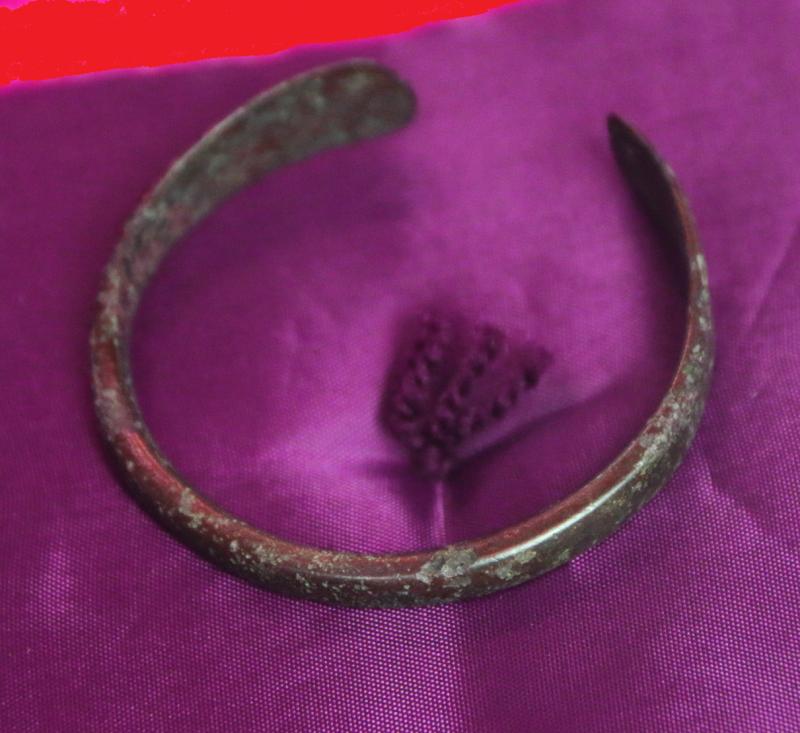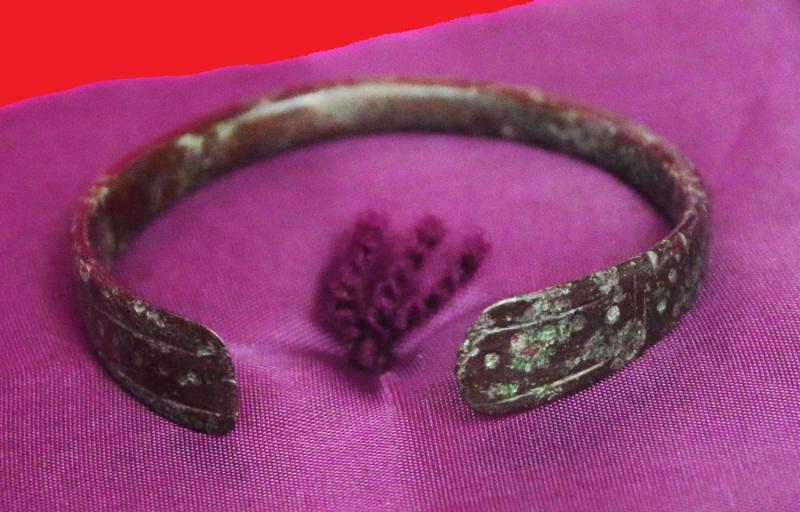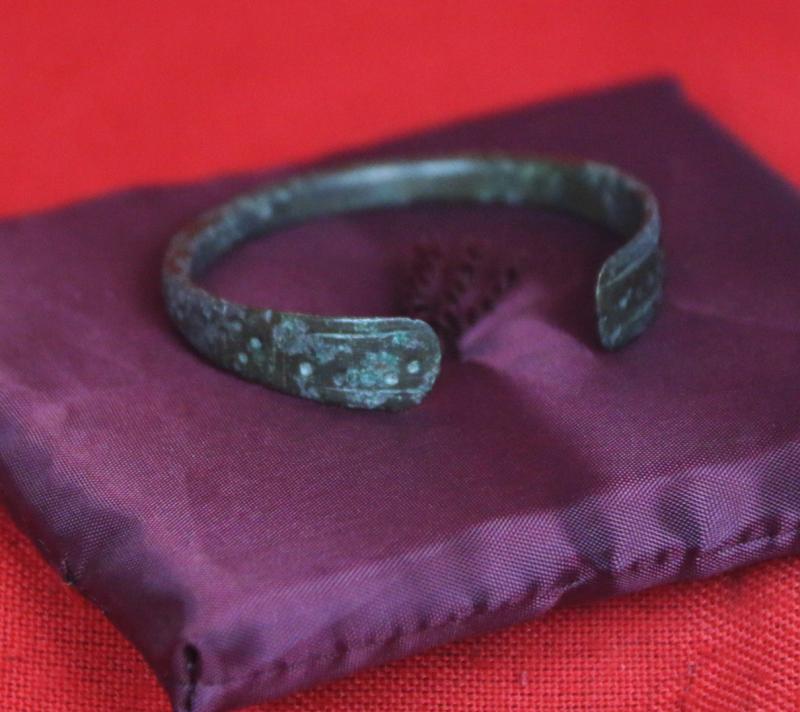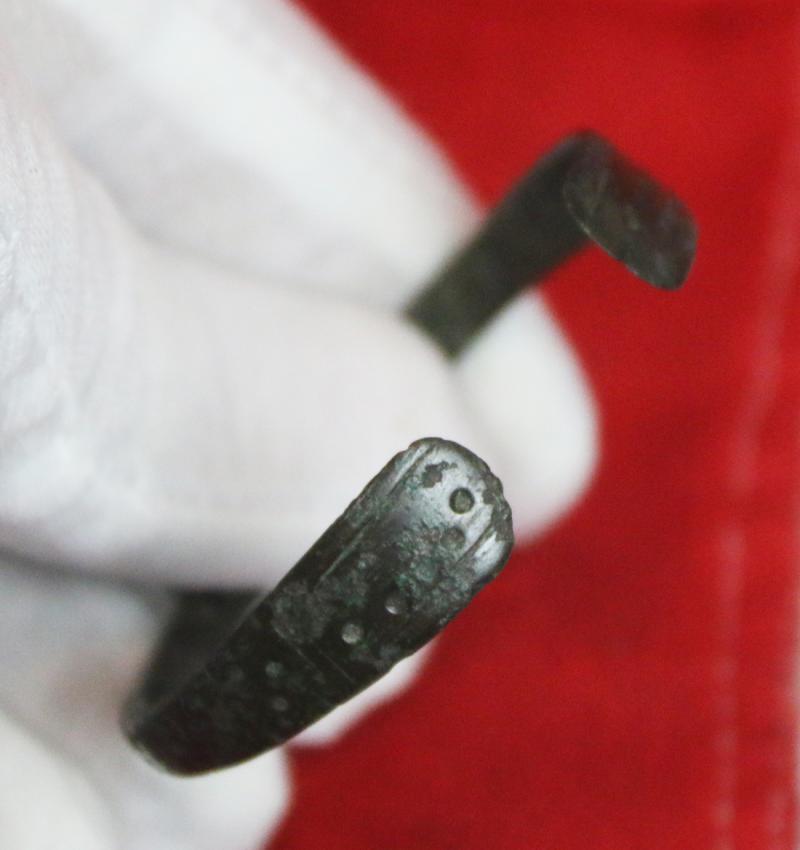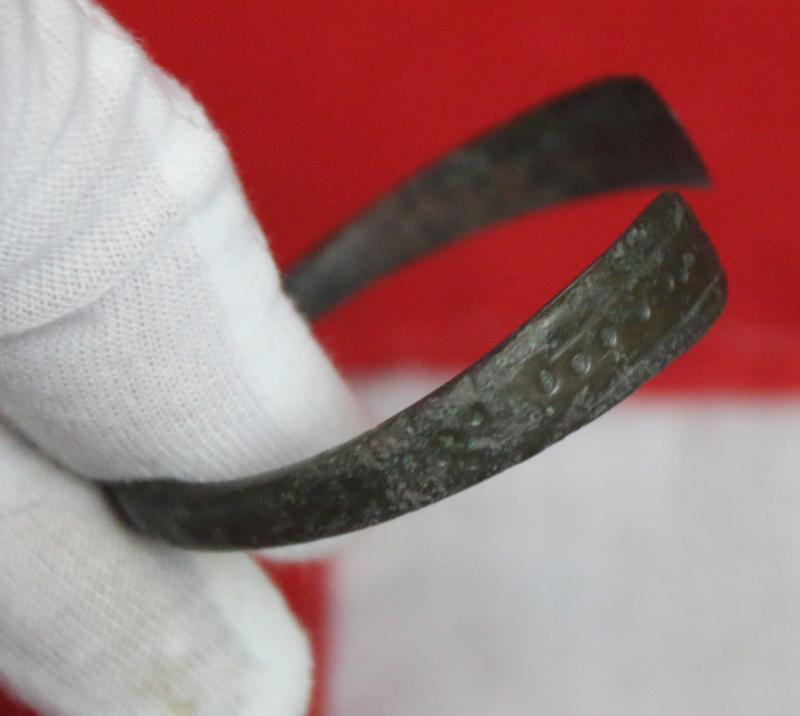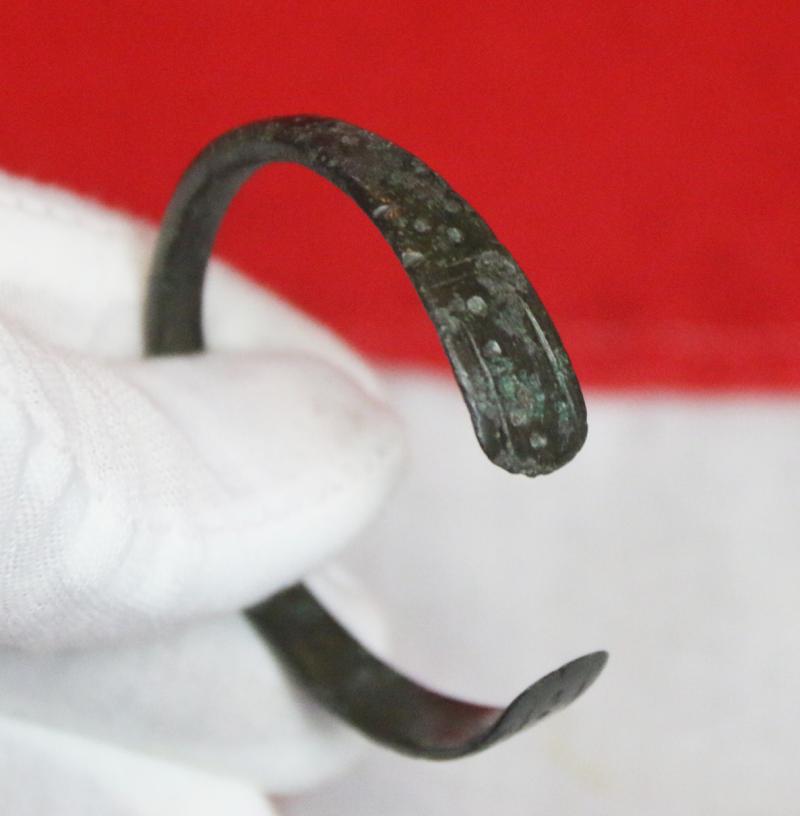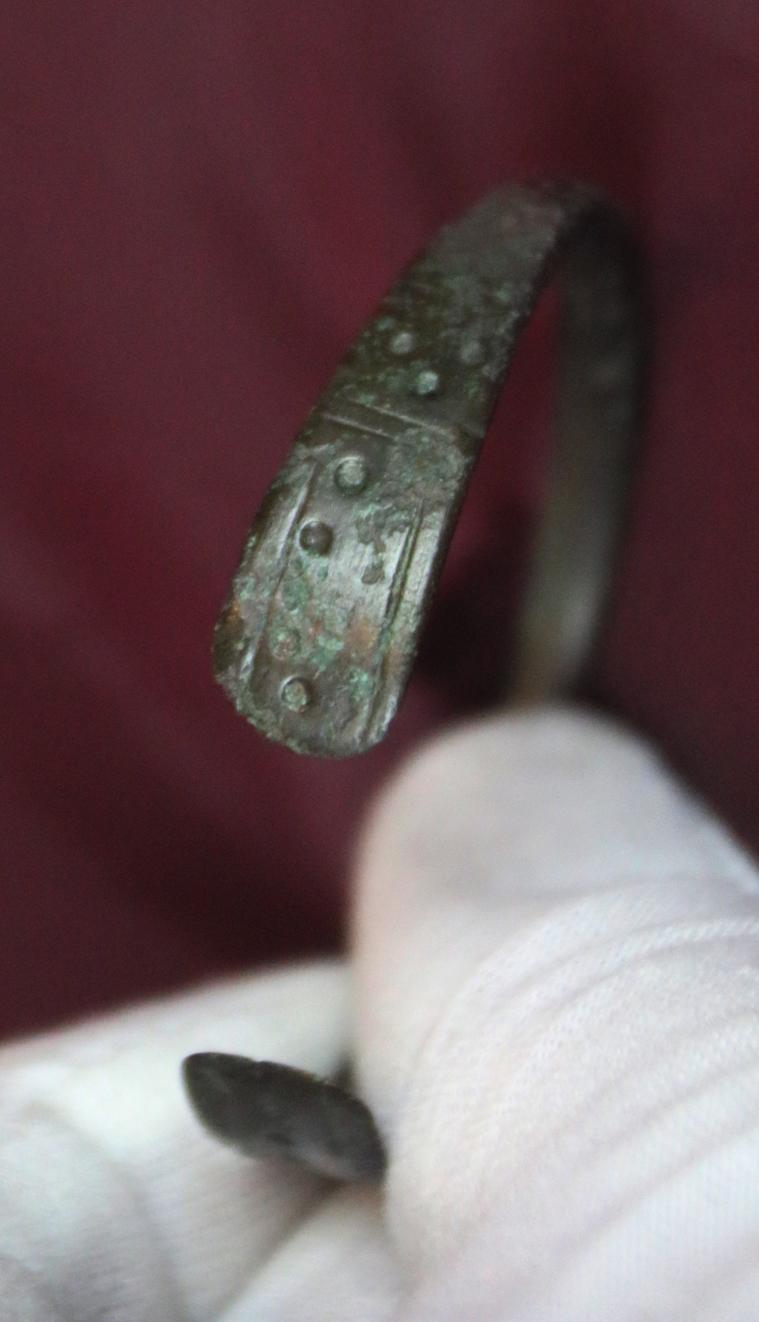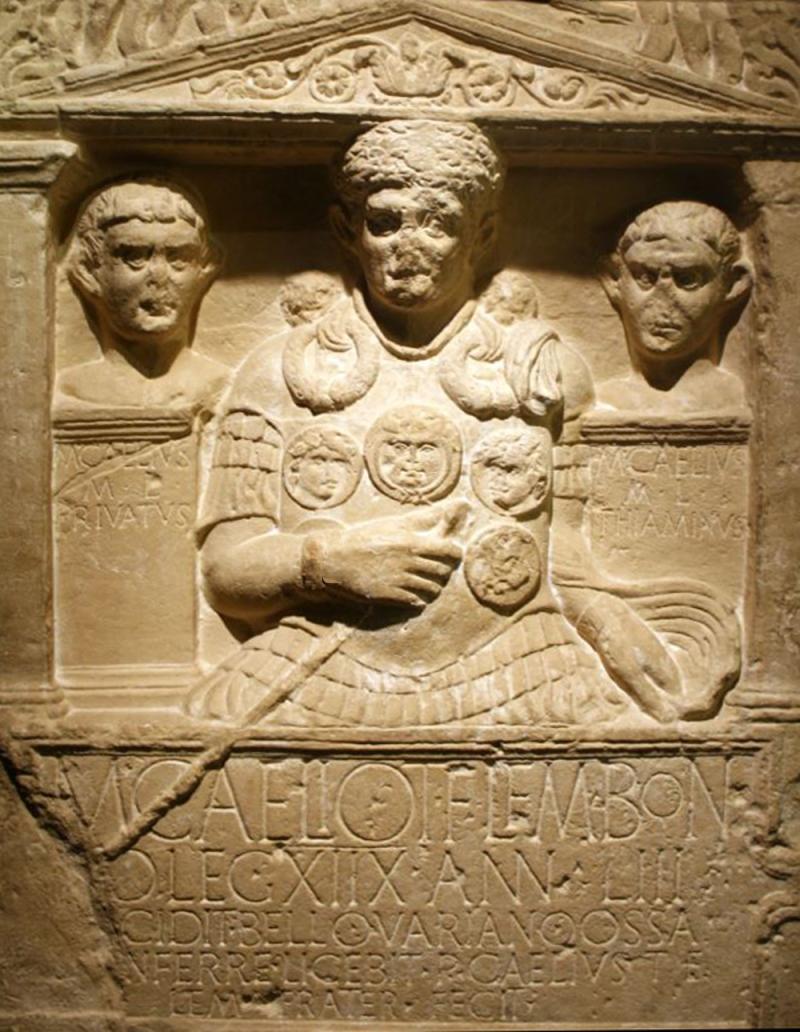A Fine, Original, Bronze Imperial Roman Legionary's Military Armilla, As Awarded for Military Gallantry. Almost 2000 Years Old Donum Militarium. Worn From The Period of Emperors Trajan, Hadrian Marcus Aurelius, Lucius Verus & Commodus
An armilla (plural armillae) was an armband awarded as a military decoration (donum militarium) to soldiers of ancient Rome for conspicuous gallantry. Legionary (citizen) soldiers and non-commissioned officers below the rank of centurion were eligible for this award, but non-citizen soldiers were not. Unlike legionaries, auxiliary common soldiers did not receive individual decorations, though auxiliary officers did. However, a whole auxiliary regiment could be honoured by a title as an equivalent award, which in this case would be armillata ("awarded bracelets"), or be granted Roman citizenship en masse as a reward. This entitled an auxiliary regiment to add the appellation civium Romanorum (Roman citizens) to its list of honours.
A very fine circa 100 AD. Imperial Roman Armilla, around 2000 years old in superb condition with natural verdigris patination. It is incised and punched in typical Roman military style. A fine bronze Armilla bracelet with rectangular section and tapering terminals with stylised Phalera type piercings repeated several times, and numerous, typical military engraved lined panels, with hammered dot decor, and open ended flattened pierced spatula terminals.
Armillae were either gold, silver or bronze. The status of the recipient appears to have determined whether he would be granted a gold armilla or the lesser silver. Bronze armillae were given as awards for distinguished conduct to soldiers of lesser rank, but were valued no less highly for the prestige they conferred upon their owners. Armillae were usually awarded in pairs and a soldier could win more than one pair. They were not for everyday wear, but generally only worn at military parades or on dress uniform occasions like a general's Triumph, though they could also be worn at certain civic events like religious ceremonies and the games.
Roman military honours were not awarded posthumously, but those won during a soldier's lifetime were often proudly shown on his sarcophagus or cenotaph. The armillae awarded to senior centurion Marcus Caelius of Legio XVIII, for example, are evident on his funerary monument, and three pairs of armillae can be seen on the memorial panel at Villa Vallelunga in Italy which depicts the awards granted to veteran C. Vibius Macer during his years of active service.4
Military armillae were modelled on those worn by the Celts. The tradition of using Celtic-style torcs and armillae as Roman military decorations had its beginnings in 361 BC when Titus Manlius Torquatus (consul 347 BC) slew a Gallic chieftain of impressive size in single combat. He then stripped the bloodstained torc from the corpse's neck and placed it around his own as a trophy.5 The Romans were initially daunted by the fearsome appearance of the Gauls, whose elite warriors were "richly adorned with gold necklaces and armbands".6 The torc was the Celtic symbol of authority and prestige. By his action, Torquatus in effect took the vanquished chieftain's power for his own, and created a potent, visible token of Roman domination. As such, over time the torc and also the armilla were adopted as official awards for valour, taking on the role of symbolic war trophies.
Armillae were made in a substantial masculine style and produced in a variety of designs: a solid, hinged cuff, sometimes inscribed with legionary emblems or decorated with incised patterns; an open-ended spiral; a chunky, rounded bracelet with open or overlapping ends; or a torc in miniature. Armillae which were open-ended or had overlapping ends often featured knobs or snake-heads as terminal
Armillae were a type of wrist adornments in ancient Rome. Depending on the design, they could be worn on the wrists, upper arms, or together with phalerae on the chests of centurions.
The earliest and first Ancient Roman Emperors were the Claudian emperors, that were;
Augustus, Gaius Julius Caesar Augustus (born Gaius Octavius; 23 September 63 BC – 19 August AD 14), was also known as Octavian, and was the founder of the Roman Empire. He reigned as the first Roman emperor from 27 BC until his death in AD 14. The reign of Augustus initiated an imperial cult, as well as an era of imperial peace (the Pax Romana or Pax Augusta) in which the Roman world was largely free of armed conflict. The Principate system of government was established during his reign and lasted until the Crisis of the Third Century.
Tiberius Julius Caesar Augustus 16 November 42 BC – 16 March AD 37, was Roman emperor from AD 14 until 37. He succeeded his stepfather Augustus, the first Roman emperor. Tiberius was born in Rome in 42 BC to Roman politician Tiberius Claudius Nero and his wife, Livia Drusilla. In 38 BC, Tiberius's mother divorced his father and married Augustus. Following the untimely deaths of Augustus's two grandsons and adopted heirs, Gaius and Lucius Caesar, Tiberius was designated Augustus's successor. Prior to this, Tiberius had proved himself an able diplomat, and one of the most successful Roman generals: his conquests of Pannonia, Dalmatia, Raetia, and (temporarily) parts of Germania laid the foundations for the empire's northern frontier.
Caligula, Gaius Caesar Augustus Germanicus was Roman emperor from AD 37 until his assassination in AD 41. He was the son of the Roman general Germanicus and Augustus' granddaughter Agrippina the Elder, members of the first ruling family of the Roman Empire. He was born two years before Tiberius was made emperor. Gaius accompanied his father, mother and siblings on campaign in Germania, at little more than four or five years old. He had been named after Gaius Julius Caesar, but his father's soldiers affectionately nicknamed him "Caligula" ('little boot')
Caligula's sister, Agrippina the Younger, wrote an autobiography that included a detailed account of Caligula's reign, but it too is lost. Agrippina was banished by Caligula for her connection to Marcus Lepidus, who conspired against him. Caligula also seized the inheritance of Agrippina's son, the future emperor Nero. Gaetulicus flattered Caligula in writings now lost. Suetonius wrote his biography of Caligula 80 years after his assassination, and Cassius Dio over 180 years after; the latter offers a loose chronology. Josephus gives a detailed account of Caligula's assassination and its aftermath, published around 93 AD, but it is thought to draw upon a "richly embroidered and historically imaginative" anonymous biography of Herod Agrippa, presented as a Jewish "national hero".286 Pliny the Elder's Natural History has a few brief references to Caligula, possibly based these on the accounts by his friend Suetonius, or an unnamed, shared source. Of the few surviving sources on Caligula, none paints Caligula in a favourable light. Little has survived on the first two years of his reign, and only limited details on later significant events, such as the annexation of Mauretania, Caligula's military actions in Britannia, and the basis of his feud with the Senate
Claudius, Tiberius Claudius Caesar Augustus Germanicus 1 August 10 BC – 13 October AD 54) was a Roman emperor, ruling from AD 41 to 54. A member of the Julio-Claudian dynasty, Claudius was born to Drusus and Antonia Minor at Lugdunum in Roman Gaul, where his father was stationed as a military legate. He was the first Roman emperor to be born outside Italy.
Nero Claudius Caesar Augustus Germanicus 15 December AD 37 – 9 June AD 68) was a Roman emperor and the final emperor of the Julio-Claudian dynasty, reigning from AD 54 until his death in AD 68.
Nero was born at Antium in AD 37, the son of Gnaeus Domitius Ahenobarbus and Agrippina the Younger (great-granddaughter of the emperor Augustus). Nero was three when his father died.1 By the time Nero turned eleven,2 his mother married Emperor Claudius, who then adopted Nero as his heir. Upon Claudius' death in AD 54, Nero ascended to the throne with the backing of the Praetorian Guard and the Senate. In the early years of his reign, Nero was advised and guided by his mother Agrippina, his tutor Seneca the Younger, and his praetorian prefect Sextus Afranius Burrus, but sought to rule independently and rid himself of restraining influences. The power struggle between Nero and his mother reached its climax when he orchestrated her murder. Roman sources also implicate Nero in the deaths of both his wife Claudia Octavia – supposedly so he could marry Poppaea Sabina – and his stepbrother Britannicus.
Once the Claudian dynasty ended it was followed, most notably, by some of the most famous, historically, Roman emperors.
The era from whence this armilla was likely awarded and worn by a decorated legionary.
The Emperors;
Trajan (98–117 CE)
Hadrian (117–138 CE)
Antoninus Pius (138–161 CE)
Marcus Aurelius (161–180 CE)
Lucius Verus (161–169 CE)
Commodus (177–192 CE)
Publius Helvius Pertinax (January–March 193 CE)
Marcus Didius Severus Julianus (March–June 193 CE)
Septimius Severus (193–211 CE)
In very sound and excellent condition for its great age, but we cannot recommend any attempt to expand it fully open to fit a large wrist as it was once originally worn. 52mm, approx.17 grms
Code: 25467
1295.00 GBP

